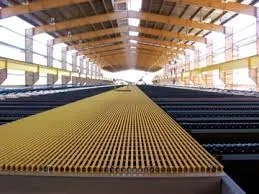
-
 Afrikaans
Afrikaans -
 Albanian
Albanian -
 Amharic
Amharic -
 Arabic
Arabic -
 Armenian
Armenian -
 Azerbaijani
Azerbaijani -
 Basque
Basque -
 Belarusian
Belarusian -
 Bengali
Bengali -
 Bosnian
Bosnian -
 Bulgarian
Bulgarian -
 Catalan
Catalan -
 Cebuano
Cebuano -
 China
China -
 China (Taiwan)
China (Taiwan) -
 Corsican
Corsican -
 Croatian
Croatian -
 Czech
Czech -
 Danish
Danish -
 Dutch
Dutch -
 English
English -
 Esperanto
Esperanto -
 Estonian
Estonian -
 Finnish
Finnish -
 French
French -
 Frisian
Frisian -
 Galician
Galician -
 Georgian
Georgian -
 German
German -
 Greek
Greek -
 Gujarati
Gujarati -
 Haitian Creole
Haitian Creole -
 hausa
hausa -
 hawaiian
hawaiian -
 Hebrew
Hebrew -
 Hindi
Hindi -
 Miao
Miao -
 Hungarian
Hungarian -
 Icelandic
Icelandic -
 igbo
igbo -
 Indonesian
Indonesian -
 irish
irish -
 Italian
Italian -
 Japanese
Japanese -
 Javanese
Javanese -
 Kannada
Kannada -
 kazakh
kazakh -
 Khmer
Khmer -
 Rwandese
Rwandese -
 Korean
Korean -
 Kurdish
Kurdish -
 Kyrgyz
Kyrgyz -
 Lao
Lao -
 Latin
Latin -
 Latvian
Latvian -
 Lithuanian
Lithuanian -
 Luxembourgish
Luxembourgish -
 Macedonian
Macedonian -
 Malgashi
Malgashi -
 Malay
Malay -
 Malayalam
Malayalam -
 Maltese
Maltese -
 Maori
Maori -
 Marathi
Marathi -
 Mongolian
Mongolian -
 Myanmar
Myanmar -
 Nepali
Nepali -
 Norwegian
Norwegian -
 Norwegian
Norwegian -
 Occitan
Occitan -
 Pashto
Pashto -
 Persian
Persian -
 Polish
Polish -
 Portuguese
Portuguese -
 Punjabi
Punjabi -
 Romanian
Romanian -
 Russian
Russian -
 Samoan
Samoan -
 Scottish Gaelic
Scottish Gaelic -
 Serbian
Serbian -
 Sesotho
Sesotho -
 Shona
Shona -
 Sindhi
Sindhi -
 Sinhala
Sinhala -
 Slovak
Slovak -
 Slovenian
Slovenian -
 Somali
Somali -
 Spanish
Spanish -
 Sundanese
Sundanese -
 Swahili
Swahili -
 Swedish
Swedish -
 Tagalog
Tagalog -
 Tajik
Tajik -
 Tamil
Tamil -
 Tatar
Tatar -
 Telugu
Telugu -
 Thai
Thai -
 Turkish
Turkish -
 Turkmen
Turkmen -
 Ukrainian
Ukrainian -
 Urdu
Urdu -
 Uighur
Uighur -
 Uzbek
Uzbek -
 Vietnamese
Vietnamese -
 Welsh
Welsh -
 Bantu
Bantu -
 Yiddish
Yiddish -
 Yoruba
Yoruba -
 Zulu
Zulu
fiberglass agitating tank
The Essential Role of Fiberglass Agitating Tanks in Modern Industries
Fiberglass agitating tanks play a crucial role in various industries, particularly in the chemical, pharmaceutical, and food production sectors. These tanks are designed to mix, blend, and agitate liquids and slurries effectively, ensuring a homogenous mixture that is vital for product quality and consistency. This article explores the significance of fiberglass agitating tanks, their construction, benefits, and applications.
Construction and Design
Fiberglass agitating tanks are constructed from reinforced fiberglass, a composite material made of glass fibers and resin. This combination results in a tank that is not only lightweight but also remarkably durable and resistant to corrosion and chemical damage. Unlike traditional metal tanks, fiberglass tanks do not rust, making them ideal for storing and processing corrosive substances.
The design of these tanks often includes various features tailored to specific applications. They are generally equipped with an array of agitation mechanisms, such as impellers or mixers, which are strategically placed to ensure efficient mixing. Additionally, fiberglass agitating tanks can be customized in terms of size and shape to meet the unique requirements of different processes.
Benefits of Fiberglass Agitating Tanks
One of the primary advantages of fiberglass agitating tanks is their exceptional resistance to corrosion. This property is particularly important in industries that handle aggressive chemicals, as it prolongs the lifespan of the equipment and reduces maintenance costs. Moreover, fiberglass tanks are less likely to leach substances into the mixtures they contain, ensuring that product purity is maintained.
fiberglass agitating tank

Another significant benefit is that fiberglass tanks are lightweight. Their reduced weight compared to metal counterparts simplifies installation and transportation, making them a cost-effective option. Additionally, their smooth interior surfaces facilitate easy cleaning and maintenance, which is essential in maintaining hygiene standards, particularly in the food and pharmaceutical industries.
Applications
Fiberglass agitating tanks find applications across a broad spectrum of industries. In the chemical industry, they are used for mixing reagents, storing solvents, and handling waste materials. In the pharmaceutical sector, these tanks play a critical role in the mixing of active ingredients and excipients, ensuring uniformity and efficacy in drug formulations.
The food processing industry also benefits significantly from fiberglass agitating tanks. They are utilized for blending ingredients in large batches, producing sauces, dressings, and other mixed products. The non-reactive nature of fiberglass ensures that no unwanted flavors or contaminants are introduced into food products.
Moreover, these tanks are becoming increasingly popular in wastewater treatment processes. Their resistance to chemicals and ease of cleaning make them suitable for agitating and mixing wastewater, enhancing the efficiency of treatment processes.
Conclusion
In conclusion, fiberglass agitating tanks are an indispensable component in numerous industrial applications. Their robust construction, resistance to corrosion, and lightweight nature make them ideal for safely handling a wide range of substances. As industries continue to evolve and seek more efficient and safe solutions, the relevance of fiberglass agitating tanks will only continue to grow. By investing in high-quality fiberglass technology, companies can ensure superior product quality, operational efficiency, and compliance with safety standards, driving innovation and growth in their respective fields.









